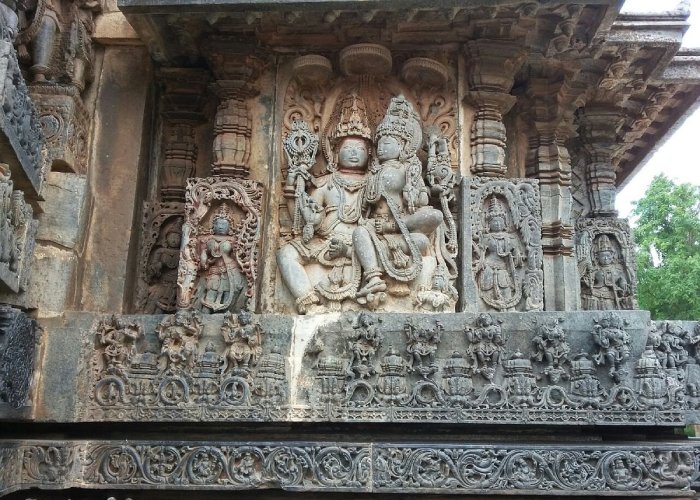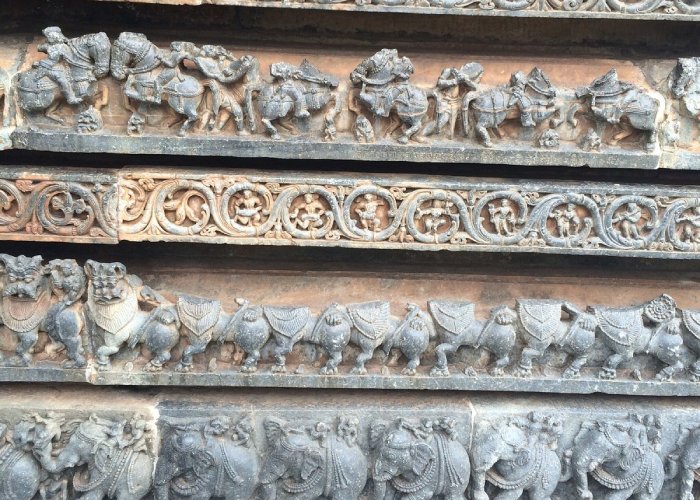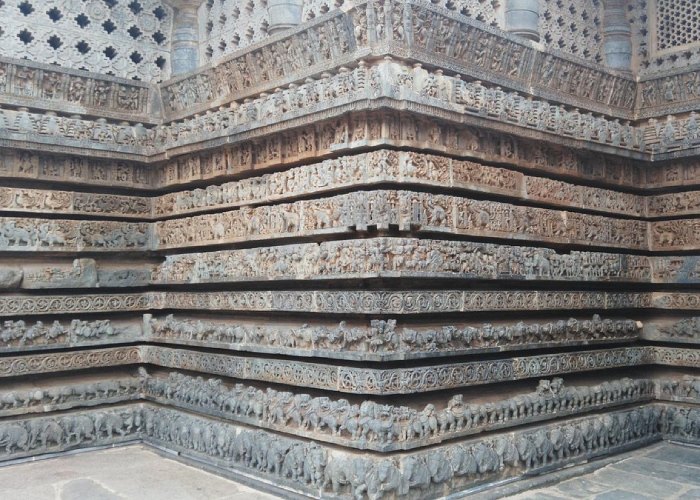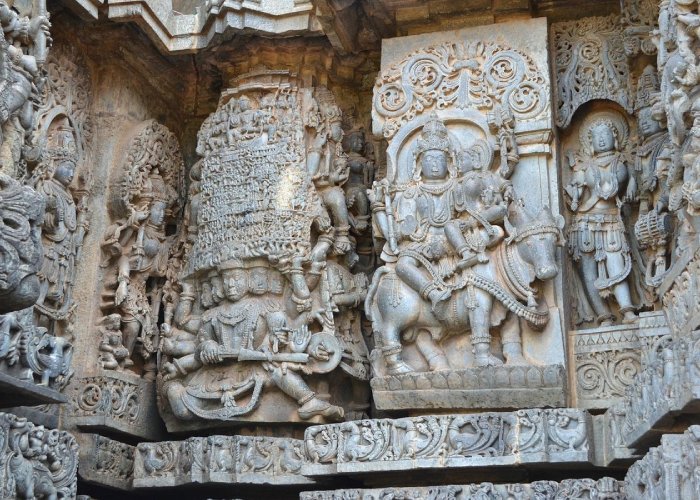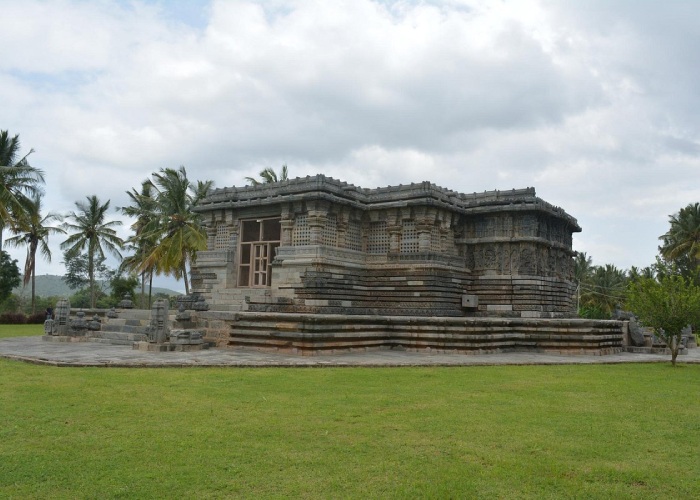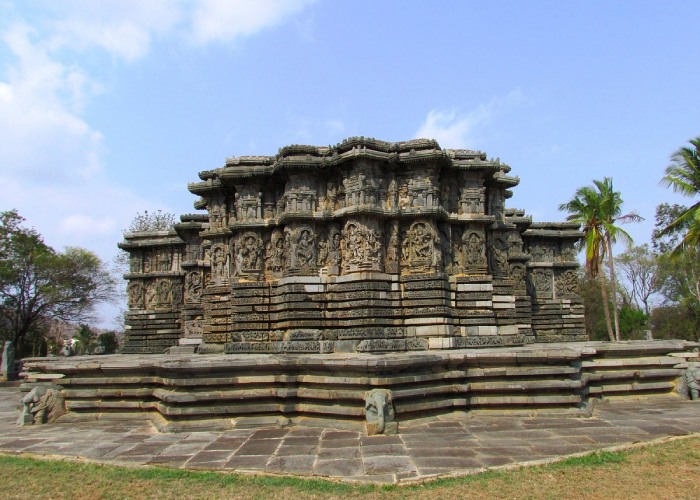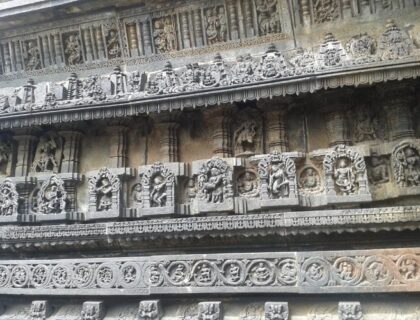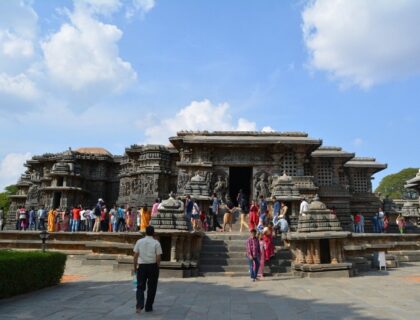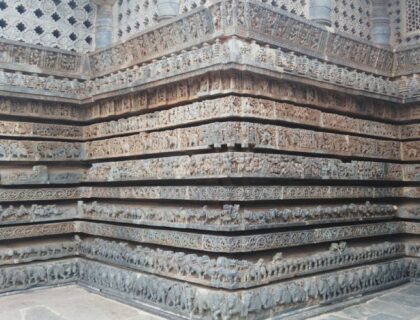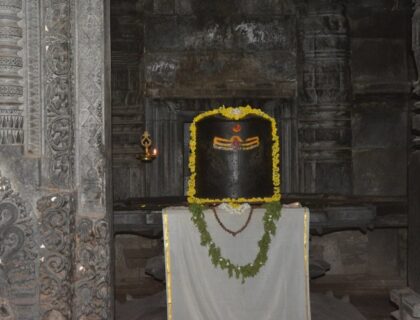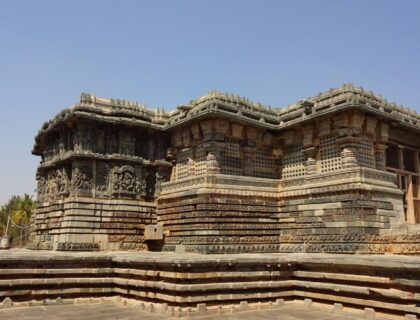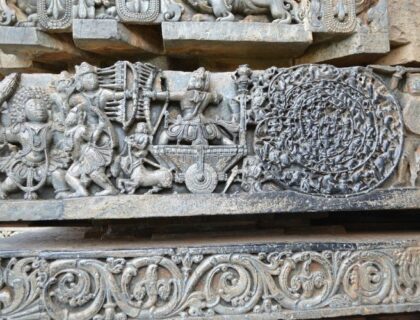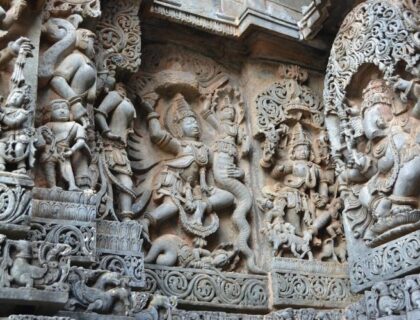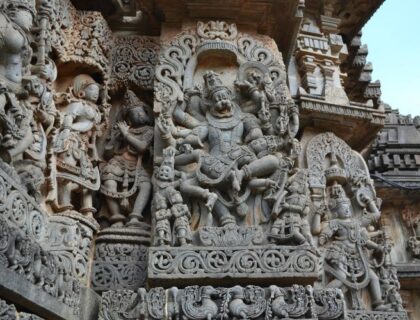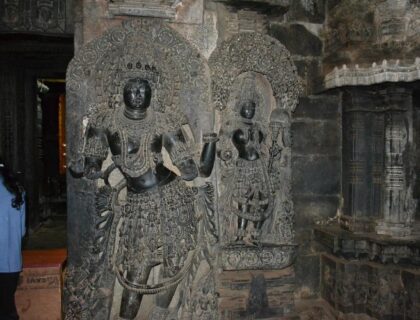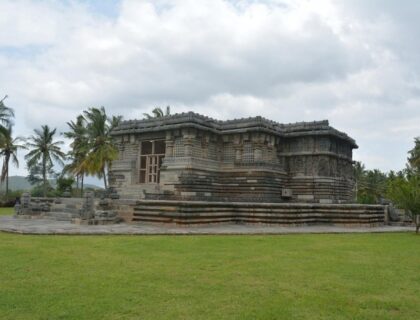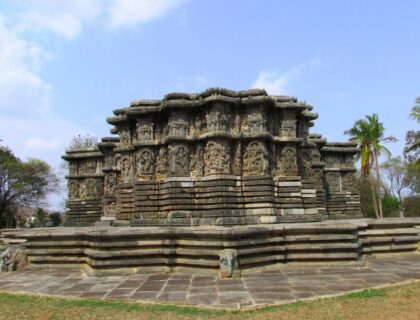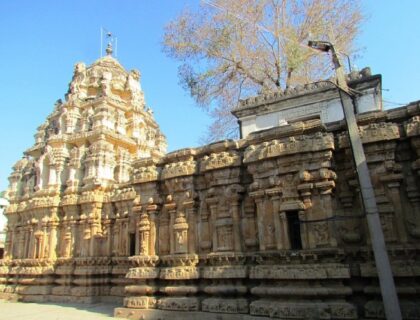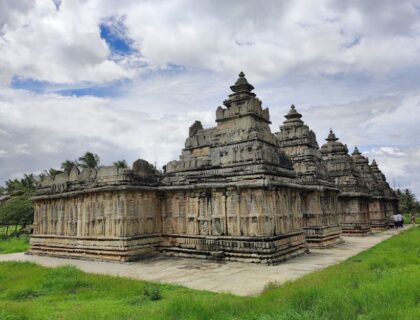Kedareshwara Temple Halebidu
Kedareshwara Temple is a Hoysala-era structure of Lord Shiva Temple located in the historically significant town of Halebidu, in Karnataka’s Hassan district. It is a short distance from the well-known Hoysaleswara Temple. The temple was built in 1219 AD by Hoysala King Veera Ballala II and his queen Ketaladevi.
The temple is made of soapstones and is dedicated to Lord Shiva, an important Hindu god. The Archaeological Survey of India has designated the Halebidu Kedareshwara Temple as a National Monument. Kedareshwara Temple is one of Halebid’s must-see temples. This temple, built in the Chalukyan architectural style, has two Hoysala emblems, displaying a beautiful and stunning mix of both styles. The temple is thought to have been built in 1319 AD, but it later collapsed and was never restored to its former glory.
Significance of Kedareshwara Temple
The Kedareshwara Temple in Halebidu is one of Veera Ballala II’s most important archaeological legacies. He was a notable monarch of his time, and his stories and monumental genius are still celebrated today. He defeated the Southern Kalachuris, the Devagiri Yadavas, the Madurai Pandyas, and the Western Chalukya Empire. Aside from these victories, he also dominated some of Tanjore’s dwindling Cholas.

In addition to the elegantly carved walls and ceiling, Kedareswara Temple has a number of sculptured friezes in the basement that depict tales from the Mahabharata, Bhagavad Gita, and Ramayana. Tourists can see Krishnashila’s Kedareshwara (Shiva) Lingam in the temple’s sanctorum. The Janardhana statue can be found to the north, while a Brahma lingam can be found to the south.
History of Kedareshwara Temple
The temple was built in 1219 CE by Hoysala King Veera Ballala II (1173 – 1220 CE) and his younger Queen Abhinava Ketala Devi. In the 12th century CE, Halebidu (Dwarasamudra) was the regal capital of the Hoysala Empire. This temple, as well as the nearby Jain temples, Hoysaleswara Temple, and Kesava temple in Belur, have been proposed as UNESCO World Heritage Sites.

According to art historian Adam Hardy, the temple was built before 1219 A.D. out of Soapstone. The Western Chalukyas popularised the use of soapstone before it became standard among Hoysala architects in the 12th and 13th centuries.
The Architecture of Kedareshwara Temple
The temple is built on a raised platform known as Jagati, a Hoysala architectural innovation. The jagati stands about five to six feet tall and is accessible via a flight of stairs. Hoysala temples are generally not designed to allow circumambulation (pradakshinapatha), with no pathway around the inner sanctum (garbhagriha).

The Jagati (platform), on the other hand, serves this purpose in addition to providing a good view of the temple’s wall designs and sculptures. The main temple’s Vimana is star-shaped (stellate), with two smaller shrines on either side with perforated windows (called Jali, literally “sieve”).
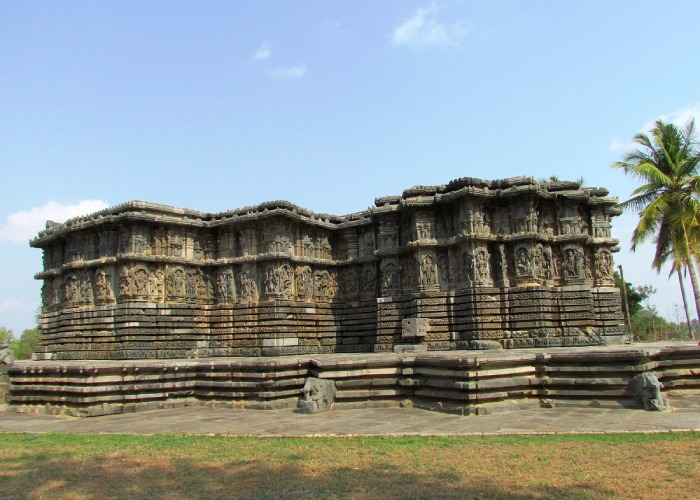
According to art historian Gerard Foekema, star-shaped temple plans are fairly common among Hoysala constructions, resulting in numerous projections and recesses in the outer walls. The decorative sculptures and designs on these projections are referred to as “architectural articulation.”
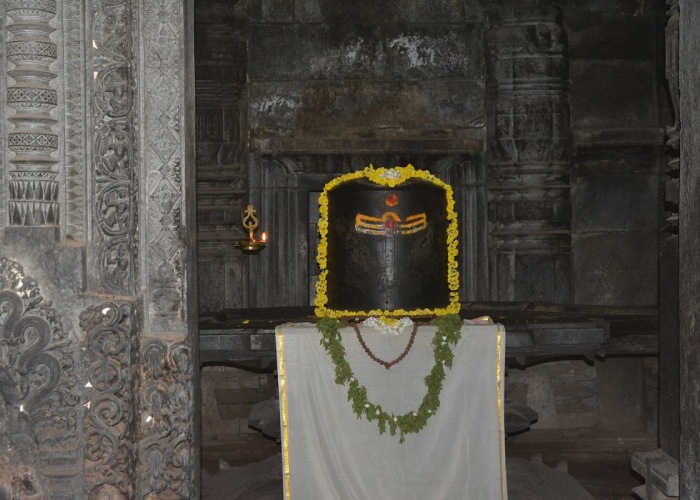
The temple has three shrines, making it a trikuta, or three shrined structures. The fact that only the central shrine has a tower, while the lateral shrines are virtually hidden behind the thick outer walls, is a common feature of trikutas. This creates the illusion that it is a part of the hall itself. Despite being a Shivite temple, the temple contains friezes and panel reliefs depicting stories from both Shivite and Vaishnavite legends.

Individual vestibules called Sukanasi connect the sanctums of all three shrines to a “staggered square” (indented) central hall (maha mantapa). A porch connects the central hall and the platform. The base of the temple wall (adhisthana) that surrounds the common hall and the two lateral shrines is made up of mouldings that are decorated with relief friezes depicting animals and episodes from Hindu lore (Purana).
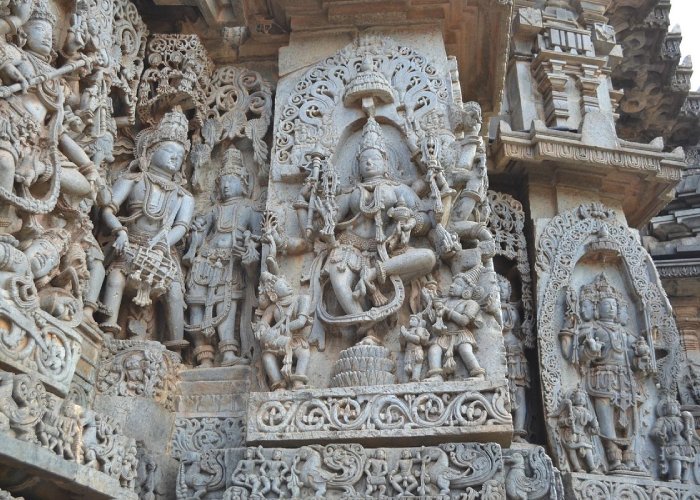
This is referred to as “horizontal treatment” by historian Kamath. The image of the deity of worship is missing from all three sanctums, as are the superstructures that cover all three shrines. Some of the finest sculptures found here include Bhairava (a form of Shiva) dancing, Govardhana (the god Krishna lifting a mountain), and Vishnu as Lord Varadaraja.
Important Facts About Kedareshwara Temple
- Kedareshwara Temple is a Hoysala temple located about 1 kilometre from Hoysaleshwara Temple in Halebid.
- This magnificent temple was built in 1219 A.D. out of soapstone and stands on a 16-corner platform that is five to six feet high. The main shrine is star-shaped, with two smaller shrines on either side with perforated windows.
- It was built in 1219 AD by King Ballala II and his younger Queen Abhinava Ketala Devi.
- Kedareswara Temple is an excellent example of Hoysala temple architecture. The temple’s carved ceilings are supported by finely polished pillars.
- The magnificent Nandi Vahana idol in its lying posture adds to the temple’s elegance. Unfortunately, parts of the temple collapsed and were never rebuilt.
- The main shrine is elevated above a lovely star-shaped platform of smooth stone. The walls, tower, doorway, and ceiling are all magnificently carved. This temple, like the Hoysaleswara temple, has classic friezes and epic scenes.
- Despite the fact that it is a Shiva temple, it is well known for its friezes and panel reliefs that depict both Shaiva and Vaishnava legends.
- On the outside of the temple, there are eight equal-sized sculpture strips. The first row is decorated with elephants, the second with Cavalry forces, and the third and fifth with beautiful creepers and flowers.
- Dwarasamudram Lake is located near the temple grounds. This lake has boating facilities.
Best Time to Visit Kedareshwara Temple
This place is very heavenly and spiritual, and you can visit it all year. The best time to visit this temple, however, is during the monsoon and winter seasons. During the monsoon season, this location receives moderate to heavy rainfall, making it appear heavenly with its greenery and bringing freshness elsewhere.
Famous Festivals In Kedareshwara Temple
- Shravana: For happiness and wealth, many fasts, offerings, and mantras are performed during the fifth month of the Hindu calendar, known as Shravana.
- Mahashivaratri is a fasting ritual that takes place in the last week of February. It is reminiscent of Lord Shiva bringing Goddess Parvati with him. A Grand Celebration is arranged by priests and the temple committee.
How to Reach Kedareshwara Temple
By Air: The nearest airport to the temple is Bangalore International Airport at Devanahalli. The temple is easily accessible by bus or taxi from most major roads.
By Rail: The Hassan junction is linked to all major cities, including (Arsikere, Mangalore, and Mysore), with the Arsikere junction connecting the Bangalore and Mumbai lines, as well as the Chennai.
By Road: Bangalore is well-connected to Halebidu via NH 48 and the state highway all the way to Belur. You can also take an alternate route that connects Halebidu and Hassan.
Also Read – Chennakeshava Temple Belur
Location
Facilities
- Drinking Water
- Pooja Item Shops
- Prasad Shops
- Restaurants Nearby
- Resting Room


